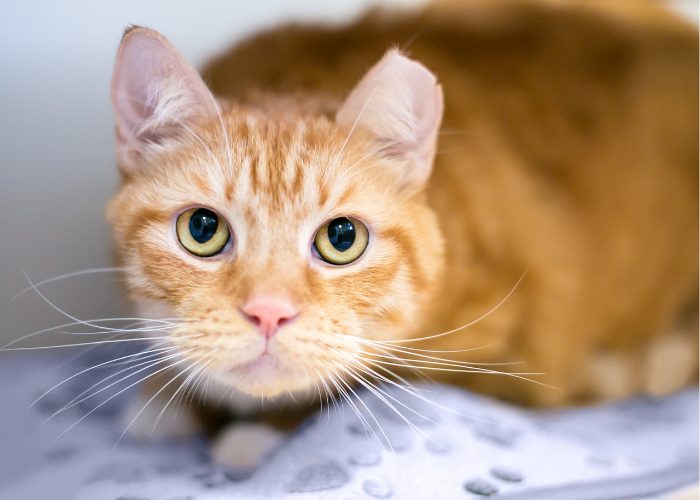If you're reading this article, you must be having trouble with a feral cat. Learning how to trap feral cats is pretty simple, but it's important that you work with the correct organizations to ensure the feral cat will get the care he needs once trapped.
If you see a strange cat hanging around your neighborhood, you can't assume that it's feral. Dealing with stray cats and dealing with feral cats are two very different things. Just because a cat is seen outside and seems to be unapproachable, doesn't necessarily mean he is feral.
There are several ways to identify a stray cat from a feral cat. The two most apparent differences are their physical appearance and temperament. If you're trying to tell whether or a not a cat is feral, look for these signs:
- Check for ear-tipping. Ear-tipping (removing the tip of the ear) is a common way to indicate that a feral cat has been spayed or neutered.
- Strays look shabbier than feral cats. You might think it would be the other way around, but stray cats typically look scruffier and more un-cared for. Strays are used to living indoors and having humans care for them. Feral cats are well-adjusted to living outside with no human contact, so they've always had to care for themselves.
- Feral cats tend to look healthier than strays. Feral cats, in most cases, manage to get the nutrients they need to survive. While most people think it's the other way around, feral cats usually look healthier than strays. Feral cats are expert hunters and great at scavenging for food and finding water sources. Stray cats will struggle to find the nutrients they need, because their food and water is usually supplied by humans.
Just because a cat seems skittish and looks a little thin, doesn't necessarily means he is feral. Learning how to trap feral cats is the easy part, knowing what to do once you've trapped them is a little more difficult.
How To Trap Feral Cats?
 The first thing you'll want to do is make a plan before you trap the cat. Call your local animal control officer or a shelter/rescue in your area, so they know to be expecting the cat.
The first thing you'll want to do is make a plan before you trap the cat. Call your local animal control officer or a shelter/rescue in your area, so they know to be expecting the cat.
In some areas, the expert you contact may recommend that you trap the cat, have it spayed or neutered and return it to where it came from. They can give you more information on the best thing to do once you've trapped a feral cat.
I live in Maine. Typically, experts here recommend finding a shelter for them, like a barn, warehouse or storage area in need of pest control.
Many rescue organizations in our state have ‘barn cat' programs that promote the adoption of feral cats for this purpose. We have very harsh winters, and it's best to get feral cats off the streets and into a sheltered area for protection.
How To Trap Feral Cats
You'll need to use a live trap with tempting bait. I find that canned cat food works best.
If the cat is especially timid, he may not dare to enter the trap (even for extremely tempting food). You can make a food trail to try to coax him in, but you'll have to work gradually. Start feeding him outside of the trap, gradually getting closer and closer.
You can also cover the trap with a blanket or towel to make it seem dark, hidden and safe. Feral cats are all about self-preservation, so you'll need to make the trap seem like a welcoming den.
Be sure to check the trap frequently. You should be checking the trap hourly, if at all possible. You don't want the cat to be trapped any longer than necessary.
You should have contacted your local animal control officer or a shelter/rescue in your area before you even set the trap. Once caught, you'll need to contact this person/organization immediately to get the cat the help that it needs.
READ NEXT: How To Check A Cat's Pulse?













